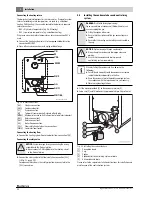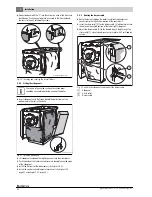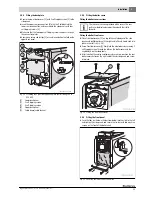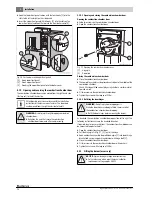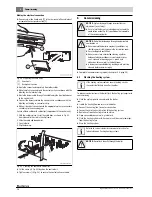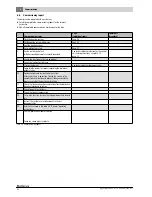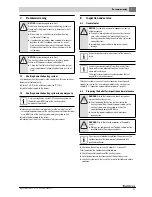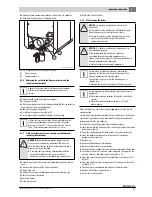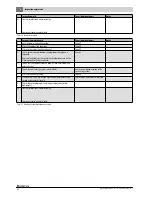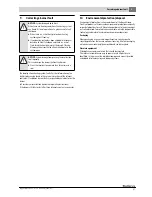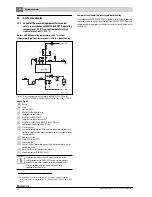
8
Inspection and service
Logano plus SB325 – 6 720 806 328 (2013/07)
34
8.4
Checking and correcting the water pressure
The heating system must contain sufficient water to ensure its correct
function.
▶ If the water pressure in the heating system is too low, top up with
water.
▶ Check the water pressure monthly.
8.4.1
When should you check the water pressure in the heating
system?
Recently added fill or top-up water loses much of its volume in the first
few days because it releases gases. With new systems you should
therefore initially check the heating water pressure on a daily basis, and
then at gradually longer intervals.
• Once the heating system is hardly losing any volume, check the
heating water pressure monthly.
A distinction is generally made between open vented and sealed
unvented systems. In practice, open vented systems are rarely installed
nowadays. We will therefore be using a sealed unvented heating system
to demonstrate how you can check the water pressure. All settings will
have already been made by the contractor when the system was first
commissioned.
8.4.2
Sealed unvented systems
For sealed unvented systems, the pressure gauge needle [3] must be
within the green band [2]. The red needle [1] of the pressure gauge
must be set to the pressure required for the heating system.
▶ Checking the heating system water pressure.
▶ Top up the heating water if the pressure gauge needle [3] drops below
the green band [2].
▶ Top up with water via the filling valve in the heating system pipework.
▶ Vent the heating system.
▶ Check the water pressure once more.
Fig. 40 Manometer for sealed unvented heating systems
[1]
Red needle
[2]
Green marking
[3]
Manometer needle
8.4.3
Installations with automatic pressurisation systems
For installations in which an automatic pressurisation system is
integrated, observe the manufacturer's instructions.
The water quality requirements also apply here (see operator's log).
The fill and top-up water quality must comply with the
specifications in the operator's log supplied.
Air pockets may form in the heating system through the
fill or top-up water releasing gases.
▶ Vent the heating system (e.g. bleeding the radiators).
▶ If required, top up with water.
NOTICE:
System damage due to frequent topping up!
Subject to the water quality, your heating system can be
damaged through corrosion or scaling.
▶ Ensure that the heating system is vented correctly.
▶ Check the heating system for leaks and the expansion
vessel for functionality.
▶ Observe the requirements regarding water quality
(see operator's log).
▶ If water loss occurs frequently, locate the cause and
rectify the problem immediately.
NOTICE:
System damage due to temperature stresses!
▶ Only fill the heating system when cold (the flow
temperature must not exceed 40 °C).
▶ During operation, only fill the heating system via the
fill valve in the heating system pipework (return).
6 720 648 053-30.1T
1
3
2

